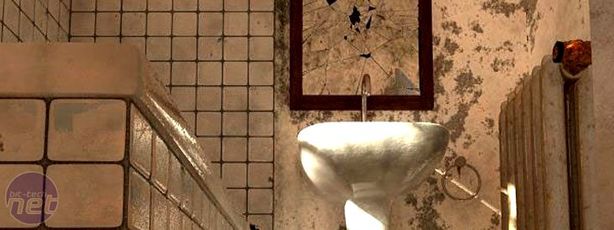Introduction
We recently published a widely debated news story about one company's claim that its new texturing process will make games 70% smaller. That company is called Allegorithmic and the technology the guys there are developing is designed to keep texture quality standards as high as they are now, whilst making the size of the texture files 90% smaller. The key to all this? A little thing called procedural textures.This follow up to that article, an interview with Sebastian DeGuy, hopes to unravel in a little more detail exactly what procedural textures are and what they will mean to you, the gamer. We discuss how small the textures can actual get, whether procedural textures can compare with textures in games like Crysis and much more in this interview. Tuck in.
Note: All pictures are made using procedural textures, click on them to view for yourself the quality of the image.
The Interview
bit-tech: The first thing most people said upon reading the original story was 'I saw this with .kkreiger a few years ago.' What is the difference between that game and your procedural texturing technology?Sebastian DeGuy: Well, .kkrieger is a spinoff from the demo scene. In the demo scene, there are contests for doing more with the less. People compete with one another, starting from a very small program producing the most impressive demo. To do this they used a lot of procedural methods for generating the content (models, animation, textures, etc.).

The procedural textures look pretty swish.
On the other hand, you've got several researchers who worked a long time ago on procedural techniques for generating content. When people see what we're doing they sometimes say: "We've seen that with .kkrieger," and they are right in some ways. Procedural techniques have been considered by industry experts for a long time, even before .kkreiger.
Despite some similarities, technique-wise, we are quite different in several ways. First, the inner technology (the maths) that we use is based on modern maths. We use 'Wavelets', instead of classic maths method of 'Fourier Transform', which was the mathematical technique used in the past by all the procedural texturing techniques (including .kkrieger). Our technique works on a new mathematical model that I developed whilst studying for my PhD.
So in basic terms, you guys use a modern mathematical technique, whereas older procedural texturing techniques were based on old maths?
Exactly - our technique allows developers a more complex ability to express themselves. A major reason procedural techniques for textures haven't been used that much so far has been the limitations of the Fourier method.

As you can see, gritty textures are equally impressive.
And the complexity of the maths?
The inner characteristics of the Fourier Transform, yes. You would have to be a strong mathematician to master it sufficiently to produce good looking textures. We, on the other hand, can produce these with far less effort. The complexity of the Fourier Transformer is the main reason you wouldn't see that many people using procedural textures... using that technique is hard.
The gallery shows what we can do with our program ProFX technology. We are doing real-time renders of our procedural textures, and the output looks like photographs to me. Doing that in traditional programmes would be quasi-impossible. It's quite easy with our tools.

MSI MPG Velox 100R Chassis Review
October 14 2021 | 15:04








Want to comment? Please log in.